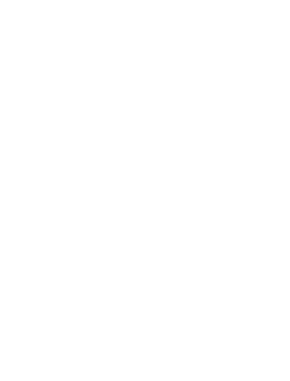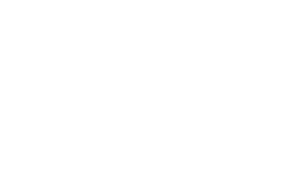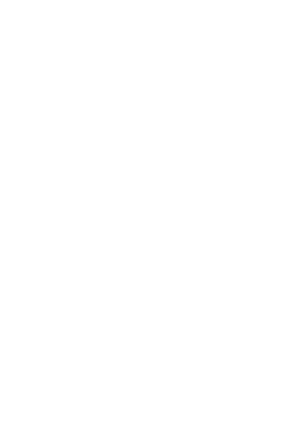 |
 |
 |

|
The increased use of thermal triple glazing has placed a greater focus on the problem of weight, especially with large glazing units. Being extremely heavy, they can often only be installed with the help of technical assembly equipment. This photo shows the crawler crane Robby 900 Universal, made by the German company TGT GmbH. Photo: TGT Teupen
|
|
 |
GLASSTEC 2014
Lightweight glazing units for architectural purposes
Set against the background of rising requirements on the energy performance of buildings, there is currently an ongoing trend toward thermal triple glazing. Although this technology is highly efficient, the glass industry is now working on lighter alternatives to counteract the heavy weights that are involved.
Improving the energy performance of windows and façades continues to be one of the central challenges in modern architecture. As well as optimising frame sections, a major role is played by the efficiency of the thermal glass that is used for this purpose. Thermal double glazing has been proving its worth for several decades now. By applying highly efficient functional coatings and using thermally optimised warm edge spacer systems, the relevant Ug value of a glazing unit – so crucial for thermal insulation performance – has been reduced to 1.0 W/m2K with argon-filled glazing. Moreover, a low-emissivity coat is added on the indoor side of a unit, so that the latest products now have values as low as 0.9 W/m2K.
Thermal triple glazing is now state-of-the-art
|

|
Posted 6 September 2014
|
Share this:
|
|
Yet thermal double glazing still cannot achieve the same excellent insulating effect as thermal triple glazing, where the relevant values are now as low as 0.5 W/m2K. This type of glass has the best level of performance and is currently state-of-the-art in traditional thermal glass applications. Its excellent insulating effect has led to an increased use of triple glazing in buildings, as it can best satisfy today’s rising requirements on energy performance. Germany, in particular, has seen substantial growth in this segment. Within just four years the market share has increased from about ten per cent to over 60, and the trend is rising. At the same time there is a tendency towards bigger glazing units. This trend is supported by ongoing developments in manufacturing technology which now permit the serial manufacturing of very large, high-precision double and triple glazing.
Heavy-weight glass can cause problems
However, there is a snag in this trend towards large panels and triple glazing. If the glass is too heavy, glaziers can easily come to the limits of their strength. Thermal glass with a triple-glazing structure and the usual thickness of 4 mm is about one third heavier than double glazing. As a result, the weight of a glass panel 1 m2 in size increases from 20 to 30 kg, and a panel that weighs several hundred kilograms can often only be installed with the help of technical equipment. This leads to a substantial rise in installation costs. Moreover, heavy glass panels make it necessary to develop new handling solutions for the manufacturing process, while also driving up the cost of transport. Another area that is coming to its limits, despite intensive development, concerns the required heavy-duty hinges. For several years now research institutes and glazing companies have been working with glass machine manufacturers on possible remedies in the form of alternative products with similar or better energetic properties, but less weight. The focus is, in particular, on thin units, transparent film and plastic panels as well as on vacuum-insulated glass for maximum insulation.
|
|
|
|
|

|

|

|
Weight reduction through thin glass
Thin glass technology is in fact ready for series production now. As regards the relevant values of heat insulation (Ugvalue), total energy transmittance (g value) and light transmission (tV), thin thermal glass has the same values as conventional triple glazing and even exceeds those values. The Saint-Gobain Isolierglas-Center in Germany, for instance, has produced 3 mm triple glazing units for quite a while now – since 2008. The two function glass units made by this company, SGIC Climatop N Light and SGIC Climatop Lux Light, are 25 per cent lighter than standard thermal glass. Thanks to their low emission coatings, they reach Ug values between 0.8 W/m2K and 0.5 W/m2K, depending on the model.
In its choice of material, the Saint-Gobain Isolierglas-Center decided against the use of thermally toughened glass. Although the hardening of the individual panels makes it possible to achieve bigger dimensions, this does not apparently pose any problems. Climatic stress may lead to
substantial deformation, which has a detrimental effect on the edge seal and therefore shortens the useful life of the thermal glass. Also, any deformation of large panels may cause distorted mirror images while looking at the glass. When asked about concerns that non-toughened thin glass may lead to a greater risk of breakage, Wolfgang Böttcher, Head of Technical Marketing at Saint-Gobain Glass Solutions Germany, said that a certain amount of experience with thin glass is indeed required in production, in logistics and on the part of windows manufacturers, but that this should not pose any problems. SGIC Climatop Light thermal glass can be used without toughening for dimensions up to 1.4 x 2.2 metres.
Another pioneer in the use of thin thermal glass is the German manufacturer Energy Glas GmbH. The company has majored on thin glass engineering since 2013, featuring three thermally pre-tensioned thin panels (TBG plus and ESG units). Its two products have the following technical specifications: Neutralux Advanced Light (3-2-3 structure): Weight: 20 kg/m•, Ug value: 0.5 W/m•K, light transmission: 73%, g value: 52%, Neutralux Ensolar Light (3-3-3 structure): Weight: 22.5 kg/m•, Ug value: 0.6 W/m•K, light transmission: 74%, g value: 65%. These panels can be made with a structure of 3 mm / 2 mm / 3 mm in TVG plus / ESG up to a size of 1.5 x 2.5 m. For bigger dimensions the panels are made thicker to meet the relevant structural requirements.
One of the benefits of using toughened glass, according to the company, is that the risk of breakage can be reduced to almost zero in both internal and external logistics and that the risk of injury is much lower in any post-installation breakage. Thanks to pre-tensioned thin glass units, the company’s thermal glazing is apparently far more resistant to thermal impact. Energy Glas GmbH sees no increased risk that the panels might buckle.
|
|

Thanks to the use of thin glass (structure shown here: 3 mm / 2 mm / 3 mm), it is possible to reduce the weight of thermal triple glazing by one third in many applications.
|
|
|
|
|

|

|

|
Glasstec 2014 will feature a range of solutions whereby the glass industry is seeking to master future challenges in this segment of highly insulating thermal multiple glazing. The leading global trade fair for the glass industry will be held in Düsseldorf from 21 to 24 October. As well as presenting a wide range of constructional glass, the international trade fair will provide a comprehensive overview of the latest production and finishing technologies as well as the entire spectrum of glass applications.
Vacuum insulated glass as a complementary product
One alternative to thin glass and plastic film and panels is to use vacuum-insulated glass (VIG) which has a double-glazing structure and is barely 10 mm thick and therefore very light. Both convection and thermal conductivity are virtually eliminated through the evacuation of air in the space between the two panels. This space is less than 1 mm wide. In combination with low-emission coating, this ensures excellent thermal insulation. To ensure that the high atmospheric pressure of 10 tonnes per square metre does not cause the panels to collapse, barely visible spacers are placed between the two panels.
Industrially manufactured vacuum-insulated glass is already being made by two companies: Nippon Sheet Glass Co. in Japan and Beijing Synergy Vacuum Glazing Technology Co. Ltd. in China. The insulation values of NSG glass, however, are no more than either 1.2 or 1.1 W/m2K, depending on the model. This level can also be achieved with conventional double glazing. Beijing Synergy says that its vacuum-insulated glass reaches a Ug value of up to 0.3 W/m2K. However, due to the high thermal stress on the edge sealing systems that are used by the two Asian companies (i.e. the glass solder), these product solutions cannot be used as single panels, but only as hybrid solutions in an insulated glass structure, involving a counter-panel.
|
|

Design principles to reduce the weight of insulating glass through the use of transparent plastic film or panels. Photo: ift Rosenheim
|
|
|
|
|

|

|

|

As an individual element, vacuum-insulated glass is less than 1 cm in thickness. Innovative edge seal technologies are to facilitate the use of float glass, single-sheet safety glass and laminated safety glass as well as the application of nearly all standard coatings.
|
|
Moreover, both systems have visible evacuation valves.
Some European companies are working intensively on VIG solutions that do not need such valves and which can be used as single elements (i.e. without counter-panels), allowing variable use in conjunction with float glass, single-sheet safety glass and laminated safety glass, achieving a Ug value of 0.5 W/m2K. Two research projects have so far been conducted in Germany (VIG – vacuum-insulated glass2 and ProVIG – production engineering for vacuum-insulated glass3). The consortium of companies and research institutions favours an edge sealing system using welded metal sheets. This solution is thought to have the greatest chances that the VIG edge seal as an element will withstand any potential strain over a period of 25 years or more.
At the moment the consortium is working on suitable system engineering under a project called VIG-S. The purpose is to work towards a vacuum-tight and mechanically robust edge seal that meets the requirements for industrial implementation, so that a decision for realisation can then be made. Another project, Winsmart4, which is currently being conducted by European research institutions and companies, focuses on developing vacuum glass with a tin edge. The aim is readiness for series production, but the final results are likely to take at least another three years.
If the two consortiums that operate in Europe achieve their aim of boosting the long-term stability of the edge seal for individual elements, then vacuum-insulated glass can develop into a serious alternative to
triple glazing and can in many cases help towards a reduction of unit weights.
Literature
|
|
|
|
|
|
|
Literature
1ift Rosenheim, “Forschungsbericht – Flächengewicht
Mehrscheiben-Isolierglas” (Research Report: Area Weight of Thermal Multiple Glazing), published in March 2013, www.ift-rosenheim.de
2 Project “VIG – Vakuum-Isolierglas” (VIG Vacuum-Insulated Glass), www.vig-info.de
3 Project “ProVIG - Produktionstechniken für Vakuum-Isolierglas” (ProVIG – Production Engineering for Vacuum-Insulated Glass), www.vig-info.de
4 Project “Winsmart”, www.empa.ch
Messe Düsseldorf GmbH
Messeplatz
D-40474 Düsseldorf, Germany
www.messe-duesseldorf.de
www.messe-duesseldorf.com
|
|
|
|
|
|
|


